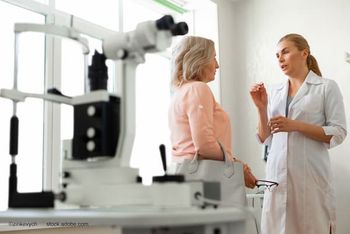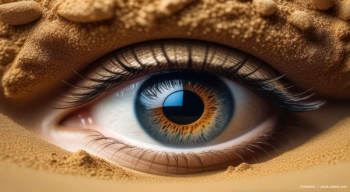For physicians, a well-informed patient can prove to be a key partner in the treatment of dry eye disease.
For physicians, a well-informed patient can many times prove to be an invaluable partner, particularly when it comes to multifactorial diseases such as dry eye.
In dry eye, clinical signs and patient-reported symptoms may not always correlate, and communication will be a key to determining a treatment path. Adding to the complexity of properly educating patients is the plethora of misleading, anecdotal information available with a simple online search.
A recent survey from the Pew Internet & American Life Project revelated that 80% of Internet users, approximately 93 million Americans, search for health-related topics online.1
Diagnosis by “Dr. Google” isn’t going away. For physicians, the key is directing patients to the most accurate, patient-friendly resources available.
A number of ophthalmology associations offer updated, reliable information on dry eye disease for patients. Below is a list of some of the resources clinicians can direct patients to for a better understanding of dry eye and what individual treatment may entail.
Association resources Research to Prevent Blindness offers free educational videos on dry eye signs and symptoms, dry eye causes, and tear osmolarity. Patients can also download a free “blinker” reminder to install on their computer as a reminder to blink and maintain proper lubrication during computer use. The association also has publications available such as a dry eye factsheet for free individual use or health care provider purchase.
The Sjogren’s Syndrome Foundation offers patients a comprehensive review of how tears impact ocular health, including illustrations detailing the differences between healthy tears and tears in patients with chronic dry eye. The foundation also provides a basic overview of how dry eye is diagnosed and treated. There are a number of downloadable print resources as well, such as the Sjogren’s Self-Help Booklet, which provides tips on coping and living with Sjogren’s as comfortably as possible. Finally, the Foundation provides a downloadable dry eye brochure and a list of questions for patients to ask their physicians.
EyeSmart, primarily geared toward physicians, is the American Academy of Ophthalmology (AAO) patient education website. It includes information on dry eye disease, among other ocular health topics. Content includes videos on dry eye symptoms, how tears function, and punctual plugs. AAO also reviews the causes of dry eye and diagnosis and treatment.
The American Optometric Association doesn’t offer multimedia, but it does have a comprehensive page on dry eye causes, diagnosis, and treatment. Find those resources here.
Pharmaceutical company resources
Pharmaceutical companies often provide information for patients about their specific dry eye treatments, but generally will not include overviews of competitive products.
Johnson & Johnson Vision has patient resources on meibomian gland dysfunction (MGD), including videos of meibomian gland expression at the slit lamp, ocular surface and gland function in healthy eyes, how blocked meibomian glands impact vision, and the long-term effects of untreated MGD. The company also includes photos of function glands versus obstructed glands so that patients can clearly see the difference. Finally, Johnson & Johnson Vision offers a downloadable MGD factsheet with a high-level overview of basic information. Find those resources here.
Allergan offers a number of patient resources, including general information on chronic dry eye, treatment options, and a dry eye quiz.
The company website has a “Find-a-Doctor” search tool, which enables patients can find a physician within 1 to 50 miles of their ZIP Code.
Allergan includes a list questions patients who think they have dry eye should ask their doctor, as well as a checklist of dry eye screening procedures they should receive during their appointment. Finally, for patients who are diagnosed with dry eye and are prescribed Restasis (topical cyclosporine 0.05%) Allergan has information on saving cards and rewards programs to lower the financial burden. Learn more here.
The Xiidra website offers basic patient information on dry eye symptoms and causes, as well as a diagnosis overview and treatment options. Unlike other resources, Shire reviews the differences between optometrists and ophthalmologists as an introduction to its “Find an Eye Specialist” tool. Like Allergan, Shire also has information on Xiidra cost and savings, educating patients on the potential financial impact of a dry eye prescription.
General medical websites
Finally, if a patient types “dry eye” into Google, they’ll be presented with a number of general medical education websites. Although these sites aren’t updated frequently, they can be useful for entry-level information on dry eye disease, especially in combination with other resources.
All About Vision includes physician-reviewed articles on dry eye, including a list of cities considered “dry eye hotspots” for environmental reasons. Patients should be cautioned that the information may not be current. allaboutvision.com.
The National Eye Institute (NEI) is part of the National Institutes of Health and represents information on eye diseases from the Federal government. It includes information on how dry eye develops and NEI-supported research efforts. The content was last updated in 2017.
References:
J. More People Search for Health Online. NBC, 2018.



















































.png)


